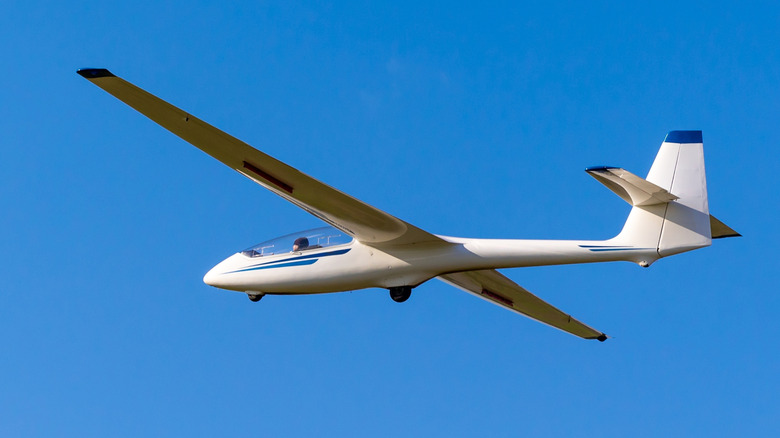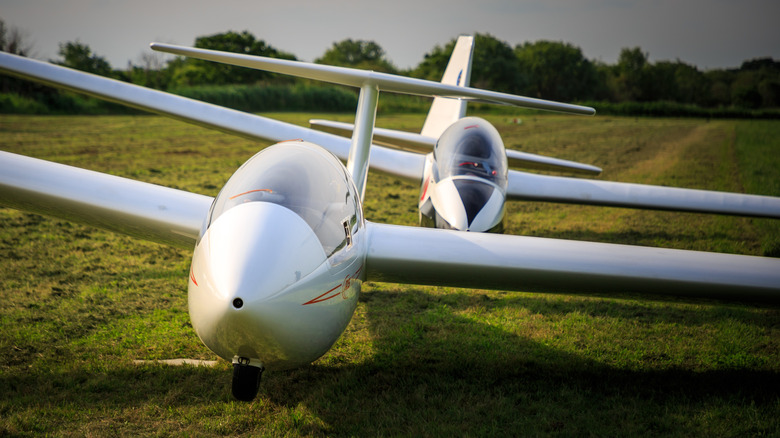Do Gliders Have Engines? Here's How The Aircraft Works
You see a plane, you expect to hear an engine. But gliders are a different breed of aircraft, representing flight in its purest form. They are frankly a testament to just how far clever engineering can take us. Most gliders, often called sailplanes, are unpowered aircraft designed to soar using nothing but natural thermal updrafts. They do it using some really clever physics (more on that later).
That said, gliders with engines do exist. These are called motor gliders and are essentially fixed-wing aircraft that can be flown with or without engine power. There are a few main types. The Touring Motor Glider (TMG) resembles a conventional aircraft the most, with a front-mounted engine, and can cruise under power or switch the engine off to soar. Some even have propellers that can be feathered to minimize drag while gliding. Then there are Self-Launching Motor Gliders, which use a small engine and propellor, which can be rotated out the top of the fuselage when needed. A similar category, known as Sustainers, has an engine just powerful enough to sustain flight and get you home if you can't find lift, but not strong enough for launching. Essentially, these are hybrid designs that offer the best of both worlds and are quite similar to light airplanes that manage to fly with very little horsepower.
While the convenience of motor gliders is undeniable, the market is still commanded by their engine-free counterparts — sailplanes. So, how exactly does this aircraft stay aloft?
Here's how the aircraft works
Of course, it's all got to do with design and physics. Perhaps the most difficult bit is getting the glider up there. The common methods include an aerotow, where a powered plane pulls the glider to altitude with a long rope, or a winch launch, where a powerful ground-based winch rapidly pulls the glider into the air like a kite. The key to the gliding is the incredible efficiency. A high-performance glider can have a glide ratio of over 60:1. This means that for every mile of altitude, it can travel 60 miles forward.
Once up, pilots try to find rising air that is ascending faster than the glider is descending. They hunt for three types of lift. Thermal lift consists of rising columns of warm air, often marked by fluffy cumulus clouds. Ridge lift is created when wind is forced upward by a mountain or hill. Finally, wave lift is formed by air oscillating on the leeward (downwind) side of a mountain, a phenomenon that has carried pilots to record altitudes as high as 76,100 ft. Some of these techniques are also employed by pilots when an airplane loses its engines.
All this is enabled by a glider's unique design. Gliders have extremely long, narrow wings (a high aspect ratio), crucial for minimizing induced drag — the drag created during the production of lift — and sleek, seamless fuselages. These are often made of composites like fiberglass, allowing them to slip through the air with minimal resistance. Interestingly, U.S. Army gliders played a crucial role in WWII.

